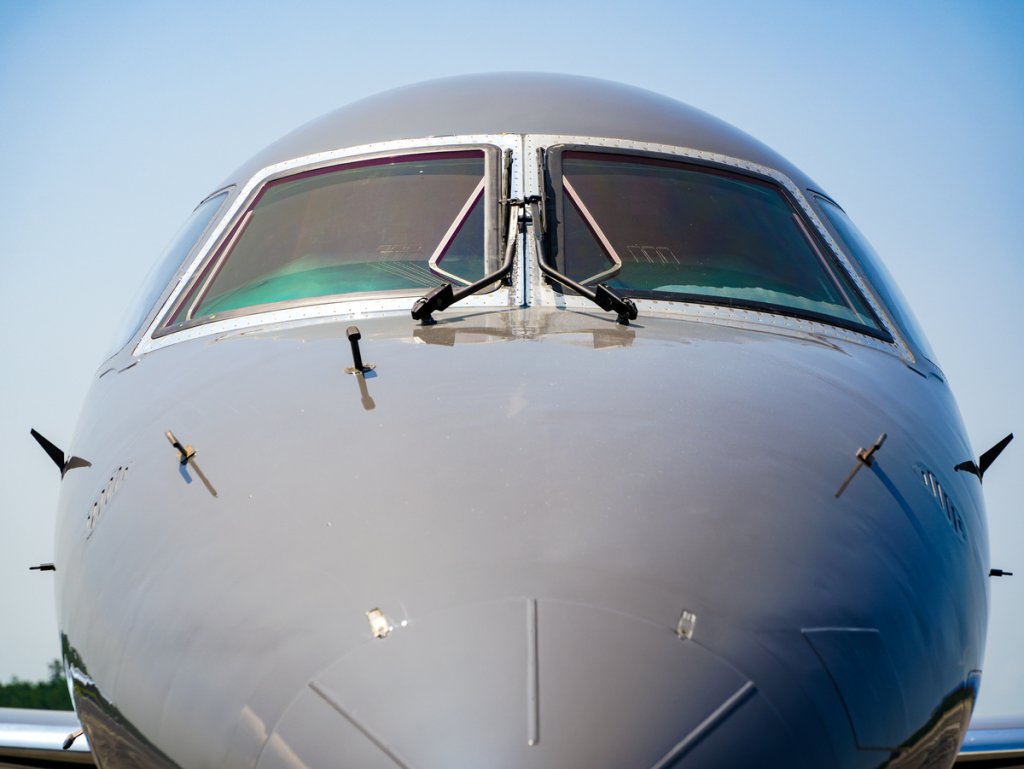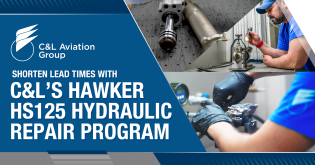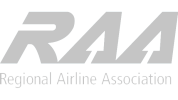
Aircraft windshields are regularly inspected for issues that may limit visibility or potentially compromise the windshield. Some issues are acceptable or require repair, depending on their allowable limits. You may have questions about what these limits are, how to mitigate potential issues, and what to do if the windshield fails inspection.
We often get asked these questions, so we address them in this article to help you make more informed decisions for mitigating windshield damage and choosing repair or replacement options.
What is an Aircraft Windshield Made Of?
Aircraft windshields (also known as windscreens and transparencies) must withstand extreme temperatures and pressure to protect pilots while allowing them to see outside.
For this reason, windshields are laminated layers of glass, acrylic, polycarbonate plastics, or a combination of those materials, bonded by polymeric material. Many aircraft windshields also feature an interlayer heating system for de-icing and anti-fogging. The exact combination and thickness of the layers will vary depending on the type of aircraft windshield and manufacturer.
Aircraft Windshield Manufacturer’s Allowable Limits
Each aircraft windshield manufacturer specifies allowable limits in the aircraft maintenance manual (AMM). These limits define what issues are acceptable, require repair, or will fail inspection. Not all issues will cause the windshield to fail. Failures are determined by how many issues are present and their location (e.g., in the pilot’s line of vision).
Always consult the AMM when assessing your aircraft’s windshield because the limits vary by windshield type and manufacturer.
Types of Aircraft Windshield Issues and Damage
Below is a list of common aircraft windshield issues.
- Chips and nicks
- Delamination
- Haze
- Bubbles
- Scratches
- Crazing
- Fogging
- Warping or deformation
- Cracks
- Broken fasteners
- Cracked mounting components
- Malfunctions in the windshield heating system

While not all these issues will result in the windshield failing inspection, others will. These issues include broken fasteners, cracked mounting components, and malfunctions with the windshield’s heating system. Refer to the AMM to determine whether these issues require repair or replacement.
What Causes Aircraft Windshield Damage – And How to Mitigate Damage?
Aircraft windshield damage is caused by various factors – from negligence to environmental hazards. While some damage is beyond human control, other damage can be mitigated by following manufacturer guidelines. If issues materialize, review the AMM to determine the next steps, such as repairing small chips or scratches to prevent potential windshield failures.
Improper Cleaning Products
Using unapproved cleaning products, such as paper towels or shop rags, can scratch the surface of the windshield. Always refer to the manufacturer’s guidelines for properly cleaning and maintaining your aircraft’s windshield.
Interlayer Heat Systems
Aircraft windshields feature a heating system to prevent icing on the glass during flight. Heating systems should be on during the whole flight. Turning the heating system on while in flight to combat icing can cause thermal shock. The drastic temperature change may result in the windshield cracking or delaminating.
If the heating system short circuits, it may cause uneven temperature distribution and result in cracking the windshield’s outer layer.
You may be able to repair or replace the system rather than replace the windshield if the interlayer heating system fails. If the windshield is damaged, then it may need to be replaced.
Moisture Between Layers
Moisture may enter between laminated layers if there are gaps along the window edges. Trapped moisture could turn to ice while flying in colder temperatures. If the moisture turns to ice, it will expand, causing the windshield to delaminate or crack.
Inspect windshield edges and “hump seals” for cracks or gaps to avoid moisture from getting between the layers.
Environmental Elements
Environmental factors may cause damage. For instance, hail can crack the windshield, or volcanic ash, lingering in the upper atmosphere, can cause abrasions to the windshield’s surface. Refer to the AMM for guidance on environmental damage.
Bubbles Between Layers
Bubbles may be present between the laminated windshield layers, which can happen during manufacturing. The amount and placement of the bubbles may be within allowable limits. If the bubbles exceed the limits, the windshield must be replaced.
Bird Strikes
Bird strikes may also damage aircraft windshields. The extent of the damage depends on the size of the bird. Generally, bird strikes happen during take-offs, landings, or while the aircraft is at a low altitude.
What to Do If Your Aircraft Windshield Fails Inspection?
If your aircraft fails inspection, you may need replacement. Lead times for obtaining aircraft windshields for the manufacturer vary between 4 and 18 months, depending on the windshield type. Order safety stock in advance, if possible. This way, a spare will be available or on the way in case of unexpected windshield damage.
If your aircraft windshield only requires minor repairs for delamination or seal replacement, consider sending your windshield to a reputable aircraft transparency repair shop.
Repaired aircraft windshields may be available on the aftermarket and can be used as a temporary solution. Note that repaired windshields should be replaced with a new or newly rebuilt windshield as soon as possible.
Check out “Where is My Aircraft Windshield? A Guide to Understanding the Aircraft Transparencies Industry” to learn more about the aircraft windshield industry and other windshield replacement options.

Aircraft Windshield Companies
Generally, at least two qualified aircraft windshield companies support an aircraft type, ensuring windshield availability. Most aircraft models have two types of windshields approved for installation: PMA (parts manufacture approval) and OEM (original equipment manufacturer). Operators should review windshield supplier options for their type of aircraft. (Note: windshields cannot be installed on aircraft for which they are unapproved.)
Aircraft windshield industry leaders include PPG Aerospace, Saint-Gobain Aerospace, GKN Aerospace, and Lee Aerospace.

















